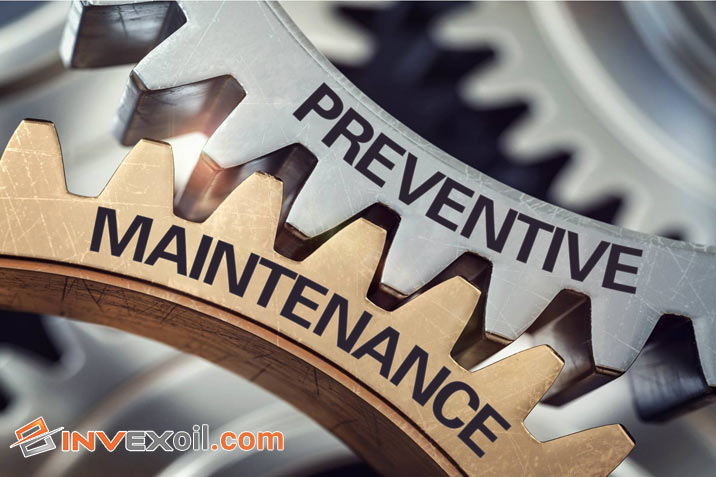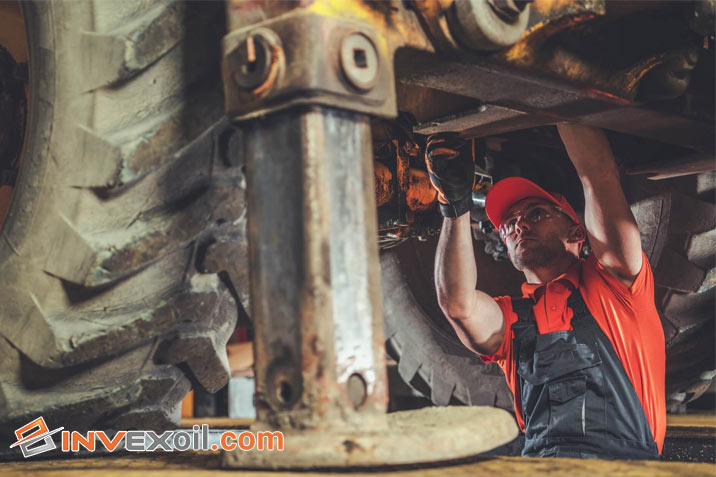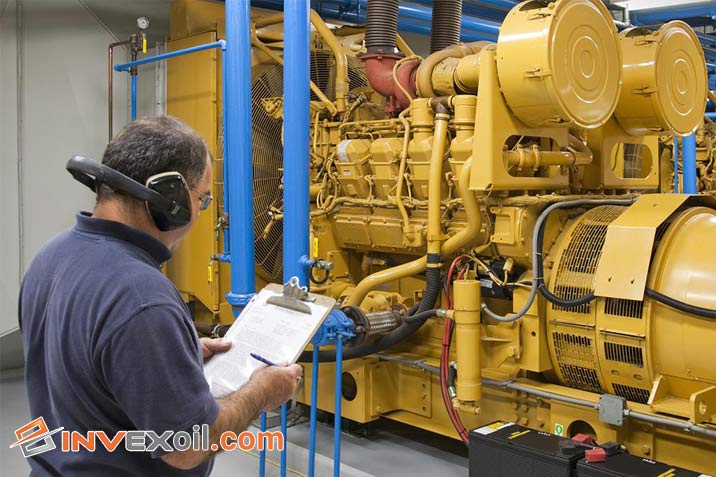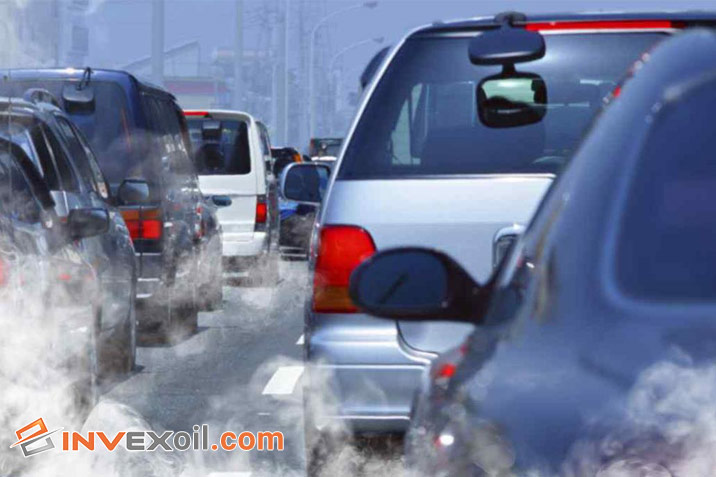Lubrication failure is a critical issue in machinery and engines. It occurs when the lubrication supply system, responsible for reducing friction and wear, falters. Understanding the causes and analysis methods for lubrication failure is paramount.
In brief, lubrication failure encompasses factors like oxidation, high temperatures, pollutants, insufficient lubricant levels, and viscosity issues. Oxidation leads to chemical changes in the oil, affecting its performance. High temperatures cause oil thinning, reducing its effectiveness. Pollutants and sediment gradually compromise lubrication. Inadequate lubricant levels and incorrect viscosity further exacerbate the problem.
In this article, we will examine each of these causes, their effects, and how to prevent lubrication failure. So, let’s explore the intricacies of this important issue to ensure smoother machinery operation, cost-effective maintenance and what are the different types of lubrication.
Table of Contents
Analysis and Investigation of Lubrication Failure
it can be a significant issue in the oil, gas, and chemistry industry. In this section, we will delve into why analyzing failure is crucial. It’s not just about the breakdown of machinery; it’s about safeguarding investments, preventing downtime, and ensuring operational efficiency. Each analysis method will lead to a detailed examination labeled.
-
The Power of Visual Inspection
Visual inspection is the first line of defense against lubrication failure. Its importance cannot be overstated. By visually inspecting lubricant quality, you can spot potential problems before they escalate, saving both time and money. This process involves identifying visible contaminants and issues that might be invisible to machinery sensors.
Here’s a table of comprehensive visual inspection checklists to guide you:
| Inspection Point | Details |
| Color and Clarity | Check for color changes and clarity issues. |
| Texture | Assess the texture for abnormalities. |
| Contaminants | Look for foreign particles or sediments. |
| Odor | Detect any unusual or burnt odors. |
| Fluid Level | Ensure the lubricant level is adequate. |
-
Oil Analysis Testing
Oil analysis testing is a valuable tool for diagnosing lubrication issues. It goes beyond what the naked eye can see. This section explores the critical role of oil analysis testing and the different types of tests available, each with its own significance in identifying potential problems.
Here are some common oil analysis tests and their significance on a table:
| Test Type | Significance |
| Wear Particle Analysis | Identifies wear patterns and sources. |
| Spectroscopy | Determines chemical composition and wear. |
| Viscosity Measurement | Checks for changes in lubricant viscosity. |
| Water Content Analysis | Detects water contamination in the oil. |
| Acid Number Analysis | Indicates oil degradation due to acidity. |
-
Wear Particle Analysis
Wear particle analysis is a specialized technique that helps pinpoint the source of wear in machinery. It provides essential insights into the condition of components and allows for proactive maintenance. Let’s delve into how understanding wear particle analysis can be your key to preventing lubrication failure.
The results of wear particle analysis can reveal critical information are here in this table:
| Particle Type | Significance |
| Metal Particles | Indicate wear on metal components. |
| Non-Metallic Particles | Identify issues like dirt or contaminants. |
| Particle Size | Helps gauge the severity of wear. |
| Particle Shape | Can hint at the type of wear occurring. |
| Concentration Levels | Indicates the magnitude of the problem. |
By using these methods and tables, you can gain a comprehensive understanding of lubrication failure, empowering you to take proactive measures to prevent it and optimize your operations.
Causes of Engine Oil Failure
In this section, we will explore in-depth the multitude of factors that contribute to lubrication failure. Recognizing and comprehending these root causes is paramount for preventing costly machinery breakdowns and ensuring uninterrupted operations. Each cause will be elaborated on in subsequent sections.
1-Oxidation
Oxidation in engine oil is a complex chemical process where the oil reacts with oxygen over time. This reaction can have a profound impact on lubricant performance and engine health. Let’s delve deeper into how oxidation affects your machinery.
Here, we highlight different oxidation levels and their effects on a table:
| Oxidation Level | Impact |
| Low | Minimal impact on performance. |
| Moderate | Decreased lubrication effectiveness. |
| High | Severe damage to engine components. |
| Extremely High | Risk of engine seizure and catastrophic failure. |
Oxidation can lead to a reduction in oil viscosity, the formation of sludge, and the creation of acidic byproducts. These effects can result in increased friction, reduced lubrication efficiency, and ultimately, damage to engine components.
2-Failure Due to High Temperature
High temperatures can significantly accelerate oil degradation, jeopardizing its viscosity and lubricating properties. Understanding how temperature affects your lubricants is vital for preventing costly failures.
The effects of temperature on oil are here in this table:
| Temperature Range | Effects |
| Normal Operating Range | Optimal viscosity and lubrication. |
| Elevated Temperatures | Reduced viscosity, potential damage. |
| Extreme Heat | Severe viscosity breakdown, engine damage. |
Elevated temperatures cause oil to thin out, reducing its ability to provide an effective barrier between moving parts. This thinning can lead to increased friction and wear on engine components, ultimately resulting in machinery breakdown.
3-Pollution and Sediment
Pollutants and sediment in engine oil are often silent culprits that gradually contribute to lubrication failure. Understanding how these contaminants affect your machinery is essential for maintaining peak performance.
Types of pollutants and sediment commonly found in engine oil are here in this table:
| Contaminant Type | Impact |
| Dust and Dirt | Abrasive wear on engine components. |
| Metal Particles | Increased friction, accelerated wear. |
| Water Contamination | Reduced lubrication effectiveness. |
| Chemical Contaminants | Oil degradation, engine damage. |
These contaminants can act as abrasives, wearing down engine components over time, or even causing corrosion. As they accumulate, they reduce the oil’s ability to protect and lubricate, leading to performance deterioration.
4-Inadequate Lubricant Amount
Maintaining the correct oil level in your machinery is non-negotiable. Inadequate lubricant amounts can lead to a cascade of issues, and understanding their consequences is essential.
Here are guidelines to ensure the right lubricant amount in a table:
| Equipment Type | Recommended Oil Level |
| Engines | Follow manufacturer’s specified volume. |
| Gearboxes | Maintain oil levels within specified range. |
| Bearings | Keep oil level above minimum requirements. |
| Hydraulic Systems | Monitor and maintain oil at the right level. |
Insufficient lubricant levels can result in poor lubrication, increased friction, and excessive heat generation. This can ultimately lead to accelerated wear and even catastrophic equipment failure.
5-Insufficient Viscosity
Oil viscosity, or its thickness and flow characteristics, is a critical factor in effective lubrication. Understanding the importance of maintaining proper viscosity levels and the risks associated with low viscosity is vital for preventing lubrication problems.
Here are viscosity requirements for various applications in a single table:
| Application | Viscosity Range |
| Engines | Follow manufacturer’s specified viscosity. |
| Hydraulic Systems | Maintain viscosity within operational range. |
| Gearboxes | Adhere to recommended viscosity guidelines. |
| Bearings | Ensure viscosity meets equipment demands. |
Maintaining the correct viscosity ensures that the oil can form an effective lubricating film, reducing friction and wear between moving parts. Inadequate viscosity can result in metal-to-metal contact, excessive wear, and equipment failure.
And finally, By grasping these causes and their effects in detail, you can proactively address lubrication failure issues, optimize your machinery’s performance, and minimize costly downtime.
Conclusion
In conclusion, understanding lubrication failure is crucial. It encompasses factors like oxidation, high temperatures, pollutants, inadequate lubricant levels, and viscosity issues. These elements can lead to decreased lubrication effectiveness, increased friction, and, in severe cases, catastrophic machinery failure. To maintain machinery health and minimize downtime, regular oil checks and a well-maintained oil supply system are paramount. By addressing the causes and analysis methods for lubrication failure, we can ensure efficient operations and cost-effective maintenance. Stay vigilant, as knowledge about lubrication failure is key to machinery longevity and optimal performance.
FAQ
Now, there are some most common questions about this article, and you can read them to find your answers on them:
What is lubrication failure?
Lubrication failure refers to the breakdown of the lubrication system in machinery, which can lead to increased friction, wear, and potential damage to components.
What are the main causes of lubrication failure?
Common causes include oxidation of oil, high operating temperatures, contamination by pollutants or sediment, inadequate lubricant levels, and improper oil viscosity.
How can I prevent lubrication failure in my machinery?
Preventing lubrication failure involves regular maintenance, oil analysis, temperature monitoring, contamination control, maintaining correct oil levels, and ensuring proper oil viscosity for the specific application.

Hello, This is Matteo Hudson Copywriter from InvexOil. We are here to provide super-important content to help you learn more easily and be involved in the world of Petroleum and Chemistry. We are here to answer your questions, help you to have better services, and also find the best solution for your problems. Don’t be shy and ask your questions in the comment box or call our number. If you want to connect with me directly, you can search for my name on Linkedin.






